

Suunto Blog
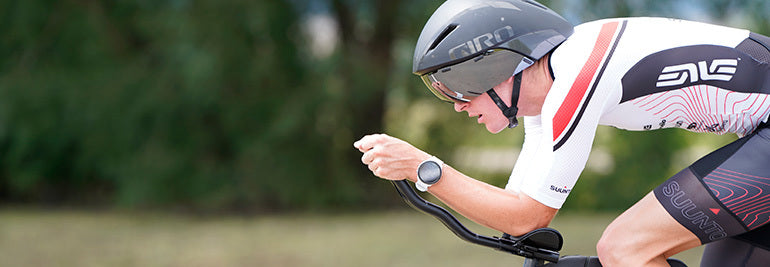
Ready to race! Follow this 12 week triathlon training plan
You can do this. That’s what Suunto multisport team athlete and coach Trista Francis wants you to know. She has prepared a 12 week training plan to get you to the start line in fighting form.
“Stop waiting for the perfect moment,” she says. “Take the moment you have and make it perfect!”
The plan is available for free as part of Suunto Value Pack via TrainingPeaks, one of Suunto’s key partners, and provides easy to understand, week-by-week, session-by-session, training guidance. Your end of the bargain is doing the work.
Trista has a degree in sports medicine, is a long time triathlete, and has coached everyone from total beginners to Olympic hopefuls. She knows well what it takes to pull off a long distance tri. To inspire you to get going, Trista shares her favorite inspirational training quote:
The masters in the art of living make little distinction between their work and their play, their labor and their leisure, their minds and their bodies, their information, their recreation, their love and their religion. They hardly know which is which; they simply pursue their vision of excellence at whatever they do, leaving others to decide whether they are working or playing. – James A. Michener
Click here to access Trista’s 12 week triathlon training plan!
Designed for those with a solid fitness base and who are looking for guidance on doing a long distance triathlon, the plan has a four week cycle: three weeks of a progressively heavier training load, followed by one week with a lighter load. There are three of these four week training blocks.
“Fitness gains happen during recovery,” Trista says. “Work hard during the three weeks then repair and regenerate during recovery week to bring your fitness to a higher level.
“A general rule of thumb is to get the training hours in,” she continues. “If you find the intervals are too much, drop the intervals and just complete the time so you are ready for the next day’s sessions.”
On average, each week consists of eight training hours, with the heaviest weeks reaching 11 hours. You’ll be training the three disciplines every week. The swimming average is 1h30m per week, cycling is 3h50m and running is 2h40m. The longest run is two hours and longest bike ride is four hours.
Throughout the 12 weeks, every Monday is a recovery day. Trista recommends sleeping more on Mondays, or getting massages to prepare you for the coming week’s training sessions.
“These things that assist recovery are called the 1%,” she says. “Athletes that put an emphasis on this philosophy around recovery tend to stay injury free, and see greater gains compared to their peers.”
To download Trista’s 12 week training plan, login or sign up to TrainingPeaks and find the plan here.
LEARN MORE ABOUT SUUNTO VALUE PACK AND HOW TO GET THIS TRAINING PROGRAM FOR FREE
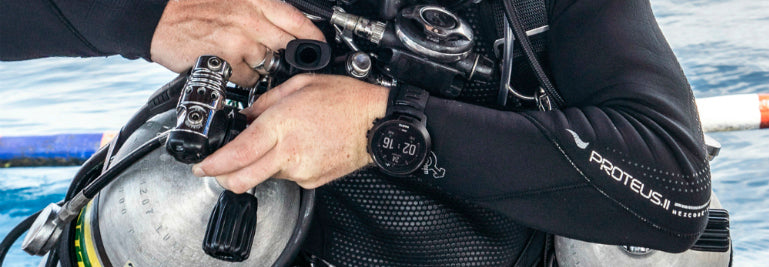
Introducing Alex Kydd
Suunto Dive are super excited to announce Alex Kydd is joining the Suunto Ambassador family. Photographer, marine biologist and diver originally from Melbourne, Australia, Alex now proclaims to being “based on” Ningaloo Reef Western Australia honoring the number of hours that he spends exploring underwater capturing his breath-taking images.
A rare shot of Alex Kydd in front of the camera taken photographer Alfred Minnaarr. ©
Alex trains like an athlete in his discipline. Practising every day, editing all the time and descending beneath the surface has led him to achieve artistry in his images. Alex's photos stand out above the rest with his dedication and passion aiding his continued development as a photographer enabling him to produce his unique shots.
“The ocean is my happy place. Every time you enter the water you never know what you might see and it's such a misunderstood ecosystem. Everything is connected and the more time you spend in it, the more you appreciate.”
Alex Kydd by photographer Alfred Minnaarr ©
Beginning his diving journey with snorkelling at 16 in the cool waters off Melbourne where he grew up, he later began scuba diving on a trip to Thailand in 2009 where he firmly solidified his love and respect for the ocean. Exploring his passion further Alex studied Marine Biology at university and four years ago he started his journey into the world of underwater photography and has had not had a chance to look back.
“At age 16 I first started taking photos. I had a very basic 2m waterproof camera for snorkelling in Melbourne. I progressed slowly to more upgraded cameras over the next few years. Eventually I had enough savings and I got myself a DSLR and housing. I was going out taking 500-1000 photos per day and editing them every night. This I believe, fast tracked me to learn. The best advice I can give for underwater photography is to find a mentor or like-minded people to learn from.”
Alex’s next stops on his extensive adventuring are Raja Ampat, West Papua, French Polynesia and Fiji where he will be exploring with his new dive computers including the Suunto EON Core, Suunto D5 and Suunto Tank POD. Alex’s favourite device at the moment is the Suunto D5. He also represents Fourth Element and Ocean Positive as a team diver.
Alex Kydd:
Instagram
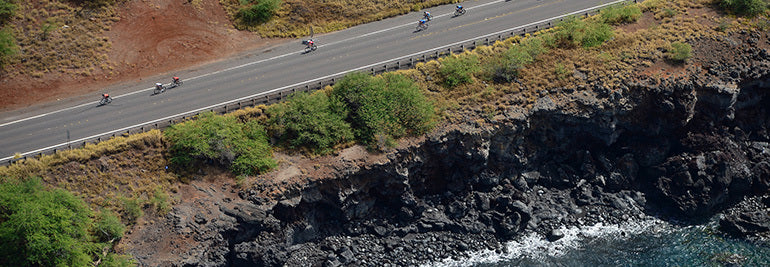
How (not) to qualify for Kona
The good news for Janne Kallio is it’s going to get easier. Now 44, it’s his last year in his age group, and qualifying for Kona gets easier in the one above. “That’s because the competition is older and I’m getting faster,” he says, laughing.
One thing Janne definitely can’t say about the last few years of racing is that it’s been easy. In May, Suunto HQ threw a surprise party for him to congratulate him on finally, after years of irritating setbacks and disappointment, earning a spot on the Kona startline.
“Even though I’ve had disasters, it’s all a learning curve,” he says. “Even though it’s been frustrating, I always felt positive because I was progressing in my training, and felt I was reaching a higher level. The race should be the goal, not just to qualify.”
Janne has been competing in tri for almost 30 years, and wrote a book about training for triathlon with the help of technology. He started racing full distance Ironman in 2010, and began trying to qualify in the last few years. “You can’t really ‘qualify’,” he says. “All you can do is train as best as you can and then the qualification will come.”
Janne’s 12 lessons from his long road to Kona
Slippery when wet
Frankfurt, July 8, 2012
Janne was feeling good, racing well, and pushing it on the ride. Maybe a little too much. It was raining hard, and he slipped and crashed resulting in a broken hip, and a loss of training time.
Lesson: Be careful in wet weather. It’s not worth risking injury.
Be grateful
Arizona, November 17, 2013
Hamstring surgery in fall 2012 meant Janne was out for the rest of that year. He wasn’t ready to race again until nearly one year later. It wasn’t pretty, he hobbled through the marathon, but made the finish line.
Lesson: Be grateful to be on the start line. It’s already a great achievement to start an Ironman race.
It’s all learning
Mallorca, September 27, 2014
Despite not qualifying, Janne was happy with this race. He says it was the first time he felt he was really able to run well during an Ironman marathon. The competition was faster. The feeling of having mastered the full distance compensated for not qualifying.
Lesson: Be patient with long distance Ironman. Each race is a learning experience. The next one will be easier.
DIY doesn’t work
Vichy, August 30, 2015
This race hurt. Janne felt confident he could qualify for Kona. To compensate for a loss of run training in previous months, due to injuries, he “smashed the bike like a lunatic”. He had the second fastest bike time, but destroyed himself in the process and ended up walking the marathon. “All the confidence of mastering the Ironman I’d gained in the previous year was lost,” Janne says. “I decided to get a coach; it’s better to have someone to look from the outside into your training.”
Lesson: Get help – find a coach.
Adapt quickly
Cape Town, April 10, 2016
With a new coach on his team Janne felt ready to rock this race. But alas, after a good swim, a bumpy road meant he lost his drink bottles on the ride. The liquid at the aid stations wasn’t enough to compete with the intense African sun. He bombed on the marathon, and missed qualifying for Kona by 40 infuriating seconds.
Lesson: Learn to handle surprises – they are bound to happen. Never neglect proper fueling or hydration.
Keep your distance
Florida, November 5, 2016
Janne finished seventh and missed a slot at Kona by 90 miserable seconds. All because he was given a five minute penalty for drafting. “This was the only time that has ever happened to me,” he says. “When the guy passed me, I kept riding with him. I kept the legal distance, but from the referees perspective it wasn’t long enough.”
Lesson: Your perception of distance might differ from the referee. Penalties hurt; be extra sure and keep your distance.
Shit happens
Cape Town, April 2, 2017
He’d put in the training, was feeling strong and ready, and then caught a cold a few days before race day. “I was shivering on the start line and when I was cycling and running I couldn’t push,” he says. “Shit happens.”
Lesson: Things happen you have no control over. Don’t let it phase you – that’s life.
Stick to the plan
Florida, November 4, 2017
Janne arrived two weeks before the race to adapt to the heat. He was in good shape, had a great swim and a good ride. On the run he was in third place and feeling good. Except, for some inexplicable reason, he felt the urge to consume more liquid and gels than he’d planned. “My stomach shut down,” he says. “I was putting too much in. Somehow at 20 km I was sitting on a toilet and flushed out everything I’d consumed.” His energy crashed, and didn’t recover. He missed qualifying for Kona by a few disgusting minutes.
Lesson: Have a clear nutrition plan for the race and stick to it.
Know the route
Tallinn, August 4, 2018
This is one race where Janne muttered a very long list of expletives. The first two stages went well. He started the run in second place in his age group. Then he came to a corner and wasn’t sure which direction to run in. He asked an official who pointed, but Janne misunderstood, and took a wrong turn. It was over: DNF.
Lesson: Study the course in advance and add a route to your watch. It’s the athlete’s responsibility to know the route.
Easy does it
Copenhagen, August 19, 2018
Still feeling disappointed the day after Tallinn, Janne wasn’t ready to give up. He discovered the Ironman Copenhagen was two weeks away and jumped at it. Because he was in good shape and didn’t run the marathon in Tallinn, he thought he would be fine. Not so. “On the bike, I couldn’t keep the power where it should have been. When I started running, I ran really fast and my pace started to plummet. “My legs were fine, but I was mentally tired. I felt unfocused and totally deflated.” He withdrew on the run.
Lesson: Be prepared and focused. If you aren’t, you won’t get the result you are after.
It’s only a sport
Florida, November, 2018
After a string of disappointments Janne was psyched and ready for this race. But then Hurricane Michael swept across the Florida Panhandle leaving a trail of destruction in his path. It was the first Category 5 hurricane on record to hit the region, and the third most intense Atlantic originating hurricane in history to make landfall. The race was cancelled.
Lesson: “You can’t control everything,” Janne says. “And it’s only a sport; a race doesn’t matter when people have lost their homes and even their lives.”
You never know
Texas, April 27, 2019
After a year of racing absurdity, Janne hoped things would turn around in 2019. Then he got the flu 10 days before the Ironman Texas. “I was out of training completely, especially swimming,” he says. “I was close to not even flying there.” After everything, Janne roused his inner tri warrior and decided to go. On race day, his symptoms were gone, but his heart rate and power numbers until then had been rubbish. And sure enough, he couldn’t push as much as he would have if fully fit. There were seven Kona slots available in his age group. Incredibly, Janne finished sixth, and finally qualified!
Lesson: Never give up.
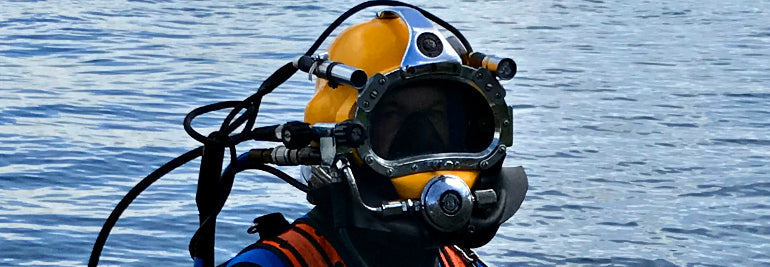
Tested by Real World Divers
Well known now for his higher-level training of professional and technical divers, along with a wealth of experience Johan began life in Netherlands and completed his first dive in Tunisia with CMAS in 1996.
Immediately impressed he purchased all his own equipment and rose to instructor level in a short time. He concentrated on specialising so he could broaden his knowledge which is where Johan developed his passion. After divng on the wrecks in the North Sea he found his calling and continued training in wreck diving and Trimix so he could explore deeper sites that hadn’t had their treasures pillaged like the wrecks at shallower depths.
“At greater depths I found the wrecks were more intact. I am talking about wrecks 80 meters and these wrecks are less exposed and also in better condition because they are not so exposed as those at shallower depths.”
Johan de With selfie.
To help him explore even more depth, his dive training led him onto rebreathers. He realised the limitation of many of his open circuit dives was the number of cylinders he could carry it seemed only natural for him to transition from open circuit.
“In 2015, together with Markku Diedrich, I dived a world record mixed team in Lake Thun, Switzerland (fresh, cold water) I was on OC and Markku on CCR where we travelled to a depth of 166.5m.”
Recording of the team’s deepest dive in a book of records.
Johan’s deep accolades do not end there.
“On the rebreather I dived into caves to a depth of 14m.
On open system in the caves up to 103m.
On the rebreather in open water up to 183m.
Open water on open system 166.4m.”
Johan now works as commercial diver and an instructor at the only private institute of commercial professional diving in the Netherlands. He also teaches deep technical diving and has his own gas filling station, Techduikschool Nederlands.
An important part of his diving is communicating information to the dedicated team of Dive Engineers at Suunto HQ as he puts computers to the test in the field and ensures they meet strict performance targets.
The infomation Johan feeds back allows the engineers to improve and fine tune devices allowing for the best user experience and in turn lets divers focus on the action and rely on their robust companions in the toughest conditions.
In action training professional divers in the Netherlands.
“I dive and test a lot for Suunto and share as much information as possible and give feedback about these computers both positively and negatively. I currently dive with the EON Steel and the EON Core and with the also since its release, the Suunto D5.
I use this during all my dives both OC in open water and caves and CCR in open water and in caves. As a backup I have my bottom timers with wet-note, and a spare computer in my pocket.
Everywhere and always, even with commercial diving I take the Suunto D5 into the water. I do this so that I also have a digital log of all my commercial dives.”
Suunto Dive computers stand the test of these extreme adventures alongside Johan.
Johan is not just an Ambassador for Suunto Dive, he represents brands including Ursuit and Bare drysuits, Tecline, Ammonite for lighting and Paralenz to capture the action on camera also with great satisfaction and pride.
"Regardless of environment depth or length of the dive or type of dive OC or CCR, technical diving must be feasible for everyone regardless of their financial status. These are brands that certainly think of the customer with price quality. I notice these companies listen and do a lot with the feedback given by us as Brand Ambassadors and testers of these materials.”
Jyri Vehmaskoski, Suunto EON Steel product team: "You don't dive if you don't trust your equipment. Everything we build is tested by real-world divers like us. Our gear is functional, accurate, and built to take a beating – and has hundreds of test dives to prove it."
Learn more about Suunto Dive products at suunto.com
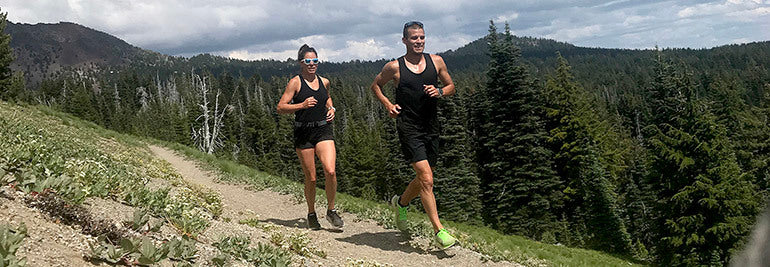
Road to Kona: 5 Tips to Train Effectively as a Couple
Ryan entered his first triathlon when a college roommate challenged him to a race in 2006. He was the last one out of the water and says he was instantly hooked. In his junior year, he found himself enjoying triathlon so much he couldn’t pull himself away from it.
Jacqui got her start in triathlon while training for the Chicago Marathon. Ryan was coaching her at the time, and would add cycling and swimming workouts to her training to reduce the running volume. In 2010, he suggested Jacqui come with him to race the Buffalo Springs 70.3 triathlon. Jacqui finished nine seconds away from qualifying for the Ironman World Championships, yet despite an awesome result she wasn't hooked.
It wasn't until their wedding day in 2012 that Jacqui decided to get serious about tri. On that special day, Ryan shared his dream with her. "Today's the day of the Ironman World Championships," he said to her. "We should be there next year." They made their wedding vows, and an ambitious sport vow.
Both Jacqui and Ryan are getting ready to race Kona Ironman this October.
Here are their top 5 tips to train effectively as a couple:
1. Set up a workout room
We train a lot indoors as it's time efficient, safe, and allows us to train together when our schedules align.
2. Plan ahead
We always know what we have going on and when we will be doing our longer sessions as those sometimes can take the entire day. Planning ahead keeps us accountable to those times and aware of when we will be free together.
3. Meal prep
Having meals planned out for the entire week gives some flexibility in the evenings when we are a little more time crunched and trying to get workouts in.
4. Understand this sport can sometimes require you (or your partner) to be selfish
There's often times that you might miss out on time spent together. Things come up every week where workouts get moved for whatever reason, and it takes away time being spent together, which leads to the next tip.
5. Set up dates
Our favorite is having brunch or ice cream together. In the past, we have even set up having brunch together once per week to try out new restaurants and wouldn't let any workout get in the way of that.
Bonus Tip: Be your partner's biggest cheerleader
Even if/when your training/racing isn't going as well as you'd like, it is so important to be there for your partner and support them through their highs and lows as well.
Look for the Giulianos at the IRONMAN Kona World Championships in a few weeks!
READ ALSO:
Road to Kona: Cody Beals’ clear Kona strategy
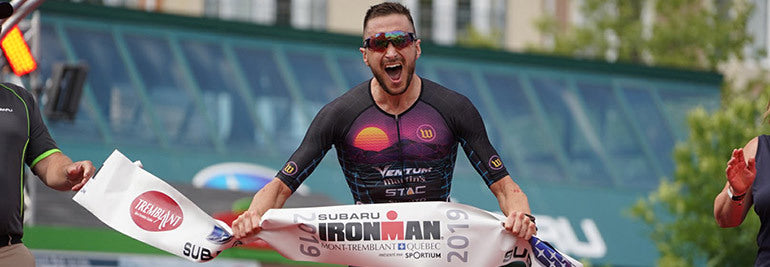
Road to Kona: Cody Beals' clear race strategy
Cody Beals didn’t fully commit himself to the sport of triathlon until after he completed his degree in Physics, but he was never a stranger to endurance sports. “My parents introduced me to endurance sports almost as soon as I could walk. I got my first taste of competition as a swimmer and later picked up cycling and running as a teenager.”
“Endurance sports, like my academics, rewarded consistent, deliberate practice even more than natural ability.”
Three full-distance pro Ironman races and three wins! (Image ©Kevin Mackinnon)
From his first local “Try-a-Tri” in 2006 Cody Beals steadily produced promising results. He fully committed himself to the sport in 2012 and in 2014 took his elite card making this his sixth season as a professional triathlete. Currently Cody has won three out of three of his full-distance IRONMAN races, recently winning IRONMAN Mont Tremblant in August for the second time.
Heading into his first appearance at IRONMAN World Championships in Kona, Cody is confident in his preparation. After defending his title at IRONMAN Mont Tremblant, he plans to continue the same preparation of prioritizing sleep, taking recovery days, and training efficiently with an emphasis on quality over quantity.
However, he is not going into the race naively believing it will be like any other race. “The one thing that I don’t have a good grasp on are the dynamics of a World Championship race. World class athletes, who are otherwise disciplined and rational racers, will behave erratically on the Queen K. Many athletes seem to make impulsive decisions, sometimes abandoning carefully crafted race plans in favor of gambling for the podium. The race plays out in a manner unlike any other. It’s the race dynamics, not the place, that intrigue and mystify me the most.”
Although he is aware of the athletes who will also be racing at Kona, Cody makes an effort to not follow his competition. This allows him to stay focused on his own process and not second-guess his decisions.
Cody on his way to a win at Ironman Mont Tremblant in August. (Image © Talbot Cox)
Cody’s average day of training can take all day. From a late morning swim, to an afternoon run, ending the day with an evening ride. When you add in recovery time, and some desk work and that’s a full day! But he explains his training regimen should not be the standard for those looking to try a triathlon. First timers looking to get into triathlons shouldn’t be intimidated or overwhelmed by the more experienced athletes. The triathlon community is inclusive and welcoming. At the end of the day, Cody says, that “the experience of an absolute beginner and a veteran pro out on the race course have far more in common than different.”
Last but not least it seems that Cody’s secret weapon is his tortoiseshell cat. He says that adopting her from the Humane Society has been nothing short of life changing and he regrets not doing it sooner. “She doesn't care how my last race or training session went. She's just there to give me unconditional affection and make me laugh every day. I'm convinced that cat cuddles are my not-so-secret weapon for recovery!”
READ ALSO:
Road to Kona: 5 tips to train effectively as a couple














































































